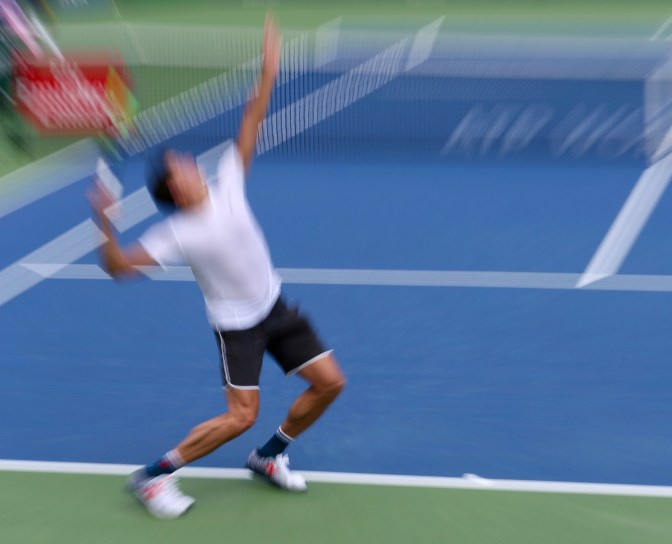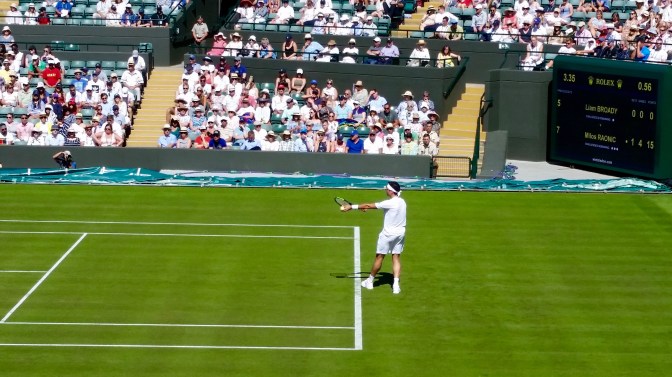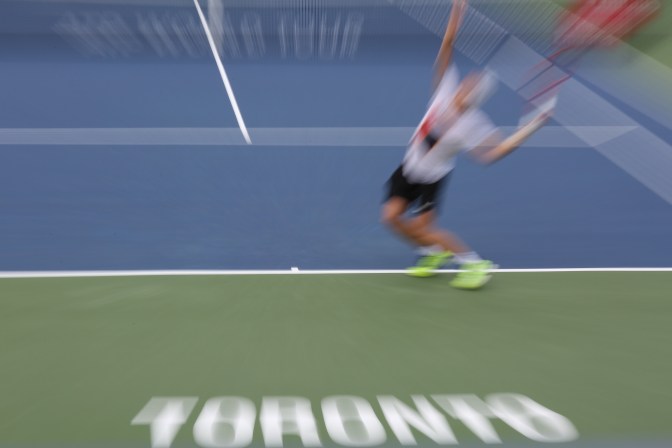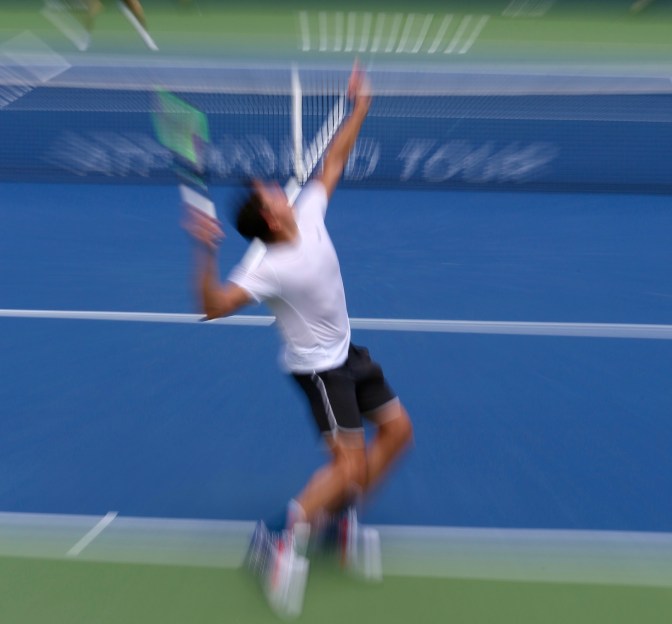–(Note: This was originally posted in August 2018. Australian wildfires in January 2020 are showing urgent need for schedule change to suit climate change.)
Imagine playing Madrid, Rome and Roland Garros in the peak summer heat of August instead of the cool days of spring.
Sound outrageous? It is. But that’s what tennis players and fans in North America have to endure. While Europe enjoys tennis events in spring and winter, and Asians get tournaments in the fall, fans across north and eastern Canada are dealing with 35 celsius and 50 percent humidity in Atlanta, Washington, Canada, Cincinnati and New York.
Maybe this is why Arthur Ashe stadium was nearly empty for early round daytime matches, and Ticketmaster was reselling tickets for 29 dollars as fans decide the health risks are not worth it. Players, meanwhile, are enduring 50 celsius conditions on court similar to Basra, Iraq this time of year. Does anybody gain from this situation?
Imagine Novak Djokovic playing in an almost empty stadium in Serbia.
That’s what Milos Raonic did at Rogers Cup in a 12,000-seat stadium that should bear his name someday in his native Toronto.
A teenager in Tokyo in 2010, Raonic told me that he wanted to be an “ambassador for tennis” to help grow the game in Canada. More than any other player in Canadian history, Raonic has done that.
His reward? About 200 people (i.e. family and friends) watching him lose to Francis Tiafoe.
—

The poor attendance isn’t Raonic’s fault. Don’t blame organizers for hyping Denis Shapovalov over Raonic and moving Shapovalov’s match to the frying pan grandstand at the same time as Raonic’s match.
Blame it on global warming and outdated scheduling.
It’s simply too hot, humid and stormy in late July and early August for fans and players to really enjoy the sport in the peak heat of the North American summer. This is why many players pull out citing various injuries.
Atlanta in July is too hot for almost everybody except Georgia Bulldog John Isner. Most top players are still recovering and resting from the 3-month European clay and grass swing ending at Wimbledon.
Due to extreme heat, Washington’s order of play doesn’t start until late afternoon, forcing Andy Murray to withdraw after playing until 3 in the morning for two cats and a dog. Local tennis diehards go, but CITI doesn’t get the attention it should.
Canadians love tennis more than ever, thanks to Raonic and Genie Bouchard, Vasek Pospisil, Daniel Nestor, Felix Auger Aliassime and of course Shapovalov.

Rogers Cup staff and volunteers also work hard for low or no pay to put on a good show for fans.
But unless you hail from the Caribbean like Rogers Cup honcho Karl Hale, early August is the worst time of the year to be in southern Ontario (where I grew up playing tennis from age 9). Half the population are on holidays at a lake or cottage to escape the disgusting heat and humidity.
Not many tennis fans from elsewhere in Canada or the US want to come to Toronto at this time of year. It’s hotter than hell walking from the new Pioneer Village subway station, about 30 minutes ride from central Toronto, to the Aviva tennis center, planted between highways in the burbs. There’s not much shade along the way and nobody selling water when I was there.
But Toronto is gorgeous in September, especially if leaves are changing color. So is Montreal, and Cincinnati, and Washington and New York. This is why the tennis tour should move these events back a few weeks. Europeans enjoy spring tennis. Americans would love fall tennis.
This would give tennis players — and fans — a well-earned one-month holiday from tennis after the long, intense drama of Wimbledon, the pinnacle of the sport. (The Championships usually end around July 15.)

In theory, you could stage Toronto or Montreal this year August 19-26, then Cincinnati August 27 to Sept 2, then run the US Open from September 3 to 16 or even a week later if needed. You could then schedule Washington and Atlanta to cooler weather AFTER New York.
Or, if Cincy and New York won’t budge, you could move Toronto or Montreal after the US Open to enjoy the spectacular fall colors. (If you think the Canadian weather is too cold in mid-September, try living in Montreal or Toronto in January, when hockey and basketball games still sell out.)
Yes, hurricanes can lash the east coast in September, but the US tennis center in New York is much better prepared with roofing now.
Yes, US sports media coverage is focussed on baseball playoffs, college football, NFL, NBA, NHL and other events then. But tennis is already a niche sport with a strong, loyal fan base and its own tennis channels. Tennis fans will come if the weather’s good, as they do at springtime European events competing at the same time as soccer.
Yes, there’s extra prize money for winning the “US Open series” of events culminating in New York. But is that worth hampering attendance and TV ratings for Washington, Atlanta, Canada and Cincy?
A grand slam doesn’t have to end a season on a surface. The winter hardcourt season doesn’t end at the Australian Open in Melbourne; it continues in Dubai, Acapulco, Indian Wells and Miami.
It simply makes more business sense to move Canada and Cincy to less hostile patterns of weather later in August, and schedule Washington and Atlanta in cooler weather after New York.

This revised schedule would provide better tennis weather in Asia as well. You would avoid the September typhoon season in Japan and enjoy the spectacular fall days of October. Beijing has better air quality in autumn than summer as well.
Since the European winter season events are indoors anyway, you could play Basel, Paris-Bercy and the ATP finals in London in November-December without much difference. Then players could have a one-month winter break to go along with their one-month summer holiday.
Laver Cup and the various proposals for Davis Cup could work within this schedule as well.
Everybody wins. Raonic would play in front of full stadiums in the cooler weather of late August with families and kids back in Toronto preparing for school. Cincinnati would continue to enjoy its prestige as one of the oldest and best-run tournaments in the world, and not have to deal with sunburn, rain delays and a parking lot quagmire. New York is ready to deal with whatever nature serves its way. Atlanta and Washington would get more of the attention they deserve instead of being forgotten after Wimbledon. And more players would enjoy the fresher autumn air of Tokyo, Beijing and Shanghai.
(words and images by Christopher Johnson Globalite Media, all rights reserved)


I mean that week at Rogers Cup was a mess with the rain and storms almost every day. That’s the reason Shapo had to be moved and a lot of people were torn between which match to go watch – ideally it would’ve been both!
Another solution is to put a roof on one of the courts. Also the grandstand court in general is not fit to be a secondary court at a masters 1000 as its football stand bench style seating is very uncomfortable during long matches.
Also more players are naturally getting injured nearing the end of the gruelling season, that is just a fact as they aren’t fresh like in the spring.
LikeLike